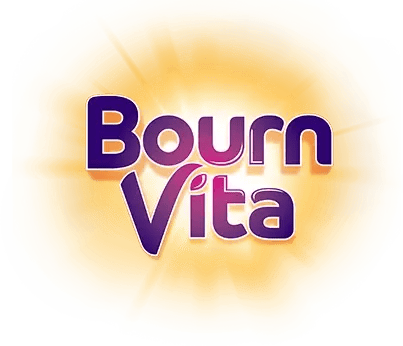- Volcano Eruption
- Floating Egg
- Magnet Treasure Hunt
- Rainbow in a Jar
- Static Electricity Butterfly
- Body Part Bingo
- Paper Airplane Contest
- Balloon Rocket Race
- Walking Water
- Shadow Drawing
- Homemade Weather Station
Introduction
Science isn’t just in books; it’s all around, waiting to be found through these fun and exciting science games. Whether it’s watching baking soda and vinegar or plants growing towards the sun, everyday moments at home can become powerful science activities. Kids are naturally curious, and science games are a fun way to encourage that curiosity. These science games and activities encourage kids to question, experiment, and explore without requiring complicated equipment or lab settings.

When kids engage in games related to science, it sparks critical thinking, improves focus, and helps them understand how the world works. Simple things like kitchen ingredients, magnets, water, and paper can turn into science experiments games that keep kids engaged and learning. Parents can easily do these at home, making them perfect for weekends, holidays, or even quick breaks from the daily routine.
11 Easy And Exciting Science Games For Kids To Do At Home

Children are naturally curious, and science games for students are an excellent way to nurture that curiosity. When you bring science into your home through fun activities, your child will not only learn basic concepts but also problem-solving skills, patience, and creativity. These fun science games will have your child observing, questioning, and exploring, turning your home into a mini science lab.
Volcano Eruption
Build a volcano using clay or dough and put a small container inside. Fill it with baking soda and have your child pour vinegar mixed with a bit of food coloring. As the foamy lava erupts, kids learn about acid-base reactions in a fun way. This exciting science game activity demonstrates an acid-base reaction in a hands-on way.
Floating Egg
In this simple yet powerful game, drop a raw egg into plain water and watch it sink. Then, add salt to the water and watch the egg start to float. The more salt you add, the higher the egg rises. This simple science puzzle game teaches about density and solubility, helping kids form and test hypotheses.
Magnet Treasure Hunt
Hide a mix of magnetic and non-magnetic items around the house or garden. Give your child a magnet and a small basket, and ask them to collect only the items that stick to the magnet. This science game helps kids explore magnetic fields while improving their reasoning.
Rainbow in a Jar
Use everyday liquids like honey, dish soap, colored water, cooking oil, and rubbing alcohol to build layers in a jar. Each liquid has a different density and settles in a distinct layer, creating a rainbow effect. This visual game teaches scientific concepts such as density and immiscibility, as well as the importance of patience and precision.
Static Electricity Butterfly
Cut out a butterfly from tissue paper and lay it flat, then blow up a balloon and rub it on your hair or a wool cloth. When you hold the balloon near the butterfly, its wings will flutter. This fun experiment introduces kids to static electricity and charges, making physics magic and accessible.
Body Part Bingo
Create a bingo card with names or pictures of various body parts, such as the heart, brain, lungs, bones, etc. Call out the function or description, and your child marks the correct body part. This game combines biology and critical thinking, helping kids learn human anatomy playfully.
Paper Airplane Contest
Have kids create different styles of paper airplanes and test them by flying them from the same starting point. Measure the distance, stability, and flight time. This hands-on contest teaches kids about aerodynamics, trial and error, and how design affects flight performance.
Balloon Rocket Race
Thread a long piece of string through a straw and tie both ends. Tape a blown-up balloon (without tying) to the straw. When you let go, the balloon zooms along the string. This game teaches Newton’s 3rd Law of Motion and how air pressure creates thrust, all while having fun.
Walking Water
Place cups with colored water alternately between empty cups. Connect them with folded paper towels. Over time, the water will move up the towels and into the empty cups, mixing colors. This experiment teaches capillary action, color mixing, and water movement, while keeping kids engaged in a visual process.
Shadow Drawing
On a sunny day or with a flashlight, place toys so their shadows fall on a piece of paper. Ask your child to trace the shadows and observe how they change when the light or the toy moves. This simple game introduces concepts such as light direction, shadow formation, and fine motor and spatial skills.
Homemade Weather Station
Create basic weather tools, such as a rain gauge using a measuring jar, a wind vane made from paper and a straw, and a thermometer to track daily temperatures. Recording and comparing data over time teaches kids about weather changes, data collection, and scientific observation.
Conclusion

These games are fun and lay the foundation for scientific thinking, problem solving, and curiosity. Perfect for weekends, holidays, or after-school fun, they turn everyday learning into an adventure.
People Also Ask
What are science games for kids?
Science games for kids are fun, hands-on activities that teach science concepts through play and experiments.
Can science games be done at home without special tools?
Yes, most science games require simple items like paper, water, salt, or balloons that are typically available at home.
Are there any science games for students beyond the primary level?
Yes, activities like homemade weather stations or magnet experiments also suit older students.
How do science games help in learning?
They foster curiosity, problem-solving, and an understanding of real-world science through hands-on experience.
Are there science games related to social or forensic science?
Yes, games like Body Part Bingo (social science) and Weather Station (forensic science) make those subjects fun and engaging.
Her love for storytelling began with reading her grandfather’s speeches, where Tarishi saw the power of words in creating lasting memories. Combining her passions for food and writing, she has turned her life into a fulfilling path of sharing stories that celebrate flavours and how food brings communities together.
The views expressed are that of the expert alone.
The information provided in this content is for informational purposes only and should not be considered a substitute for professional medical advice, diagnosis, or treatment. Always seek the advice of your physician or another qualified healthcare provider before making any significant changes to your diet, exercise, or medication routines.
















